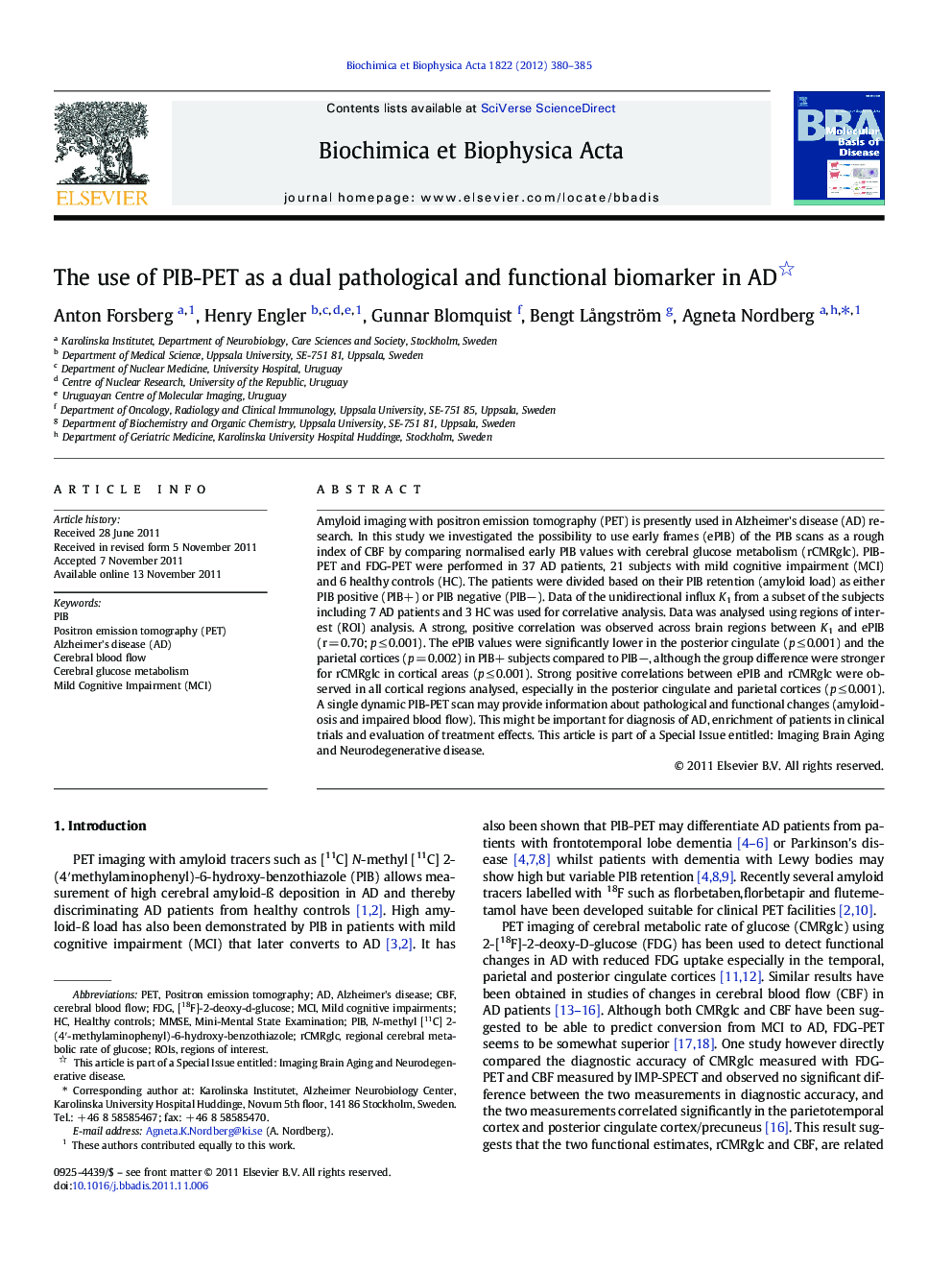| Article ID | Journal | Published Year | Pages | File Type |
|---|---|---|---|---|
| 1904970 | Biochimica et Biophysica Acta (BBA) - Molecular Basis of Disease | 2012 | 6 Pages |
Amyloid imaging with positron emission tomography (PET) is presently used in Alzheimer's disease (AD) research. In this study we investigated the possibility to use early frames (ePIB) of the PIB scans as a rough index of CBF by comparing normalised early PIB values with cerebral glucose metabolism (rCMRglc). PIB-PET and FDG-PET were performed in 37 AD patients, 21 subjects with mild cognitive impairment (MCI) and 6 healthy controls (HC). The patients were divided based on their PIB retention (amyloid load) as either PIB positive (PIB+) or PIB negative (PIB−). Data of the unidirectional influx K1 from a subset of the subjects including 7 AD patients and 3 HC was used for correlative analysis. Data was analysed using regions of interest (ROI) analysis. A strong, positive correlation was observed across brain regions between K1 and ePIB (r = 0.70; p ≤ 0.001). The ePIB values were significantly lower in the posterior cingulate (p ≤ 0.001) and the parietal cortices (p = 0.002) in PIB+ subjects compared to PIB−, although the group difference were stronger for rCMRglc in cortical areas (p ≤ 0.001). Strong positive correlations between ePIB and rCMRglc were observed in all cortical regions analysed, especially in the posterior cingulate and parietal cortices (p ≤ 0.001). A single dynamic PIB-PET scan may provide information about pathological and functional changes (amyloidosis and impaired blood flow). This might be important for diagnosis of AD, enrichment of patients in clinical trials and evaluation of treatment effects. This article is part of a Special Issue entitled: Imaging Brain Aging and Neurodegenerative disease.
► A strong, positive correlation was observed across brain regions between K1 and ePIB. ► The ePIB values were lower in posterior cingulate, parietal cortices in PIB+ subjects compared to PIB. ► Strong positive correlations between ePIB and rCMRglc. ► A single dynamic PIB-PET scan may provide information about pathological and functional changes.
